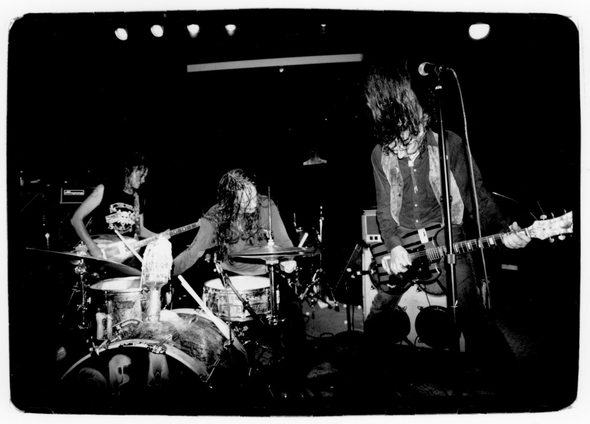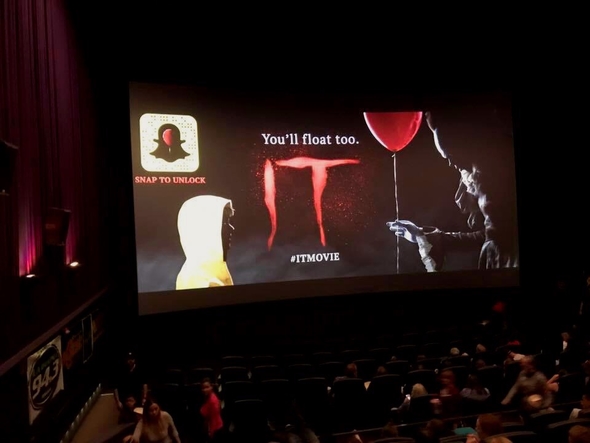Michel Hazanavicius’ The Artist is a lovely film, beautifully paced and performed. But those who have hailed it as “surprising” haven’t given its place in cinematic history sufficient thought. That Hollywood would be honoring this kind of picture in 2012 makes perfect sense. All by itself, The Artist bears witness to the crisis facing the film industry as eloquently as all the faux-documentary handheld and surveillance camera movies that have been made since The Blair Witch Project. If those deliberately amateurish affairs are the standard bearers for a revolution in the business, a radical break with precedent, The Artist is at the vanguard of a Counter-Reformation.
Maybe that explains the picture’s enigmatically vague title. Yes, protagonist George Valentin — brilliantly rendered by Jean Dujardin — deserves the praise. Like most of the dashing real-life stars his character evokes — Charlie Chaplin, Buster Keaton, Harold Lloyd — Valentin proves too singular a talent to make a smooth transition to sound film. His finely honed craft metamorphoses from an assent into a liability. In the world The Artist conjures, such professionalism is at odds with the imperative to “make it new.”
Talkies may seem like a cheap gimmick to someone like Valentin, but it is their very novelty that proves appealing to audiences. Valentin’s foil, the fresh-faced Peppy Miller — perfectly captured by Bérénice Bejo — progresses rapidly from extra to lead because she doesn’t bear the burden of history. Discovered by accident at one of Valentin’s premieres, which she is attending as a fan, she realizes the dream of all moviegoers who want to believe that they, too, could be stars if fate were on their side.
In other words, she embodies that quintessentially American conviction that the distinction between amateur and professional is both arbitrary and fluid. It isn’t Peppy’s ability that sets her apart, but the force of her desire to succeed. Her triumph is the product of luck and pluck.
By the time we encounter Valentin, his career is too firmly established to facilitate this sort of identification. Moviegoers admire his artistry, but are no longer able to imagine themselves taking his place. The implication is that this divide inspires resentment to which the sound film suddenly gives voice. In essence, he his punished for losing touch with the masses.
Students of American history will recognize this as one of the nation’s most tenacious metanarratives, one that continues to get mobilized in political campaigns to this day. Simply put, the majority of Americans still thrill to see singular men and women humbled, even when their stature is eminently justified. And they particularly enjoy the spectacle of artistry being demystified, in which individual talent is revealed to be the function of a system in which anyone and everyone can be replaced.
Hollywood turned out many, many versions of this story during its heyday between the world wars. Paradoxically, even as it promoted stars, it provoked the urge for their destruction. The message was that the industry came first, one which the Academy Awards has steadfastly continued to reiterate in the face of one crisis after another.
Now, though, we live in an era that threatens to make such corporate collectivism obsolete. Whereas a Peppy Miller could once be pulled in from the street and made into a star, thanks to the efforts of a studio and its collaborators, today’s performers don’t need to undergo this transformation. If the goal is to make something that looks like the work of an amateur, without any production values, then professionalism ceases to be very important.
As has often been the case, pornography led the way into this brave new world. Paul Thomas Anderson’s Boogie Nights ably documented the passage from the stylish X-rated films of the 1970s to the tawdry straight-to-video efforts of the 1980s. Now that trend has penetrated into the farthest reaches of the business, with more and more films aspiring to look as if they were recorded without any attempt at artistry.
In the face of this trend, the “creatives” traditionally employed by Hollywood are in danger of losing their livelihoods. It isn’t just that digital distribution and the piracy it enables are having an adverse effect on the industry’s revenue stream, one that is sure to increase over time. It’s that a sizeable portion of the viewing public, particularly young people, no longer feel the need for their spectacles to look spectacular.
This explains why Hollywood has been investing so heavily in 3-D and other technologies meant to make films more impressive, just as it did with Cinemascope and high-fidelity sound in the 1950s, when television was starting to siphon off market share. But the attempt seems more than a little desperate. When even “grown-up” character-driven dramas are being released in 3-D or, more tellingly, re-released in that format, it is clear that the industry is flailing about in a desperate bid for survival.
The Artist is the perfect tale for this “end time” mentality, because it shows us both how a professional is undone by the desire for novelty, and how his career is reborn. To be sure, the conclusion of the film, in which George Valentin gets to star alongside his onetime protégé Peppy Miller, ends ambiguously. We don’t learn whether audiences respond to the humbled star’s return to the screen. But we do at least perceive that he has survived the worst of his depression and the Depression it mirrors.
For a film that turns history into a fetish — clothes, cars, décor, and even the light switches are ostentatiously representative of its setting — it’s odd that a crucial plot development in The Artist is blatantly inaccurate. Shortly before his redemption, the out-of-work Valentin sits watching his old films, much like the iconic Norma Desmond in Billy Wilder’s 1950 classic Sunset Boulevard.
Fed up with living in the past, he seeks to destroy his legacy in an alcoholic rage, ripping open his film canisters and putting a match to their contents. As anyone who has a passing familiarity with cinematic history can tell you, the nitrate prints used in that period were extraordinarily flammable, burning so fast and hot that storing films was an extremely risky venture. In other words, there is no way that Valentin could have survived the fire he sets.
But if we stop to think about what The Artist is trying to communicate, this slip-up takes on a different aspect. There’s a reason those film canisters look exactly the same as the ones sent out to movie theaters to this day. Until the advent of digital projection, the distribution of films was by far the most conservative element of the business. Now, though, it represents the area where change is happening fastest.
In a sense, Valentin’s self-destructive act stands for the contemporary film industry’s ambivalent response to the digital era. By trying to make a profit off the desire for amateurism, executives have compromised both the artistic and financial integrity of their enterprise. Now, though, like the passé silent film star, they are having second thoughts.
What better way to express these reservations than to heap accolades on a picture that self-reflexively explores the fate of professionalism in a society that fears it? The only thing surprising about The Artist’s success is that so few commentators have seen it for what it really is: a feature-length advertisement for the traditional film industry.
This doesn’t diminish the film’s ample pleasures. The Artist is an impressive achievement, distinguished for its panache. But there have been few films less “independent” in spirit. As an act of resistance, it falls into the same category as the Jesuit Order.
Screenshot courtesy of The Weinstein Company. Published under a Creative Commons license.






Oh Charlie, this will take a 2nd or 3rd reading. Extraordinarily interesting.